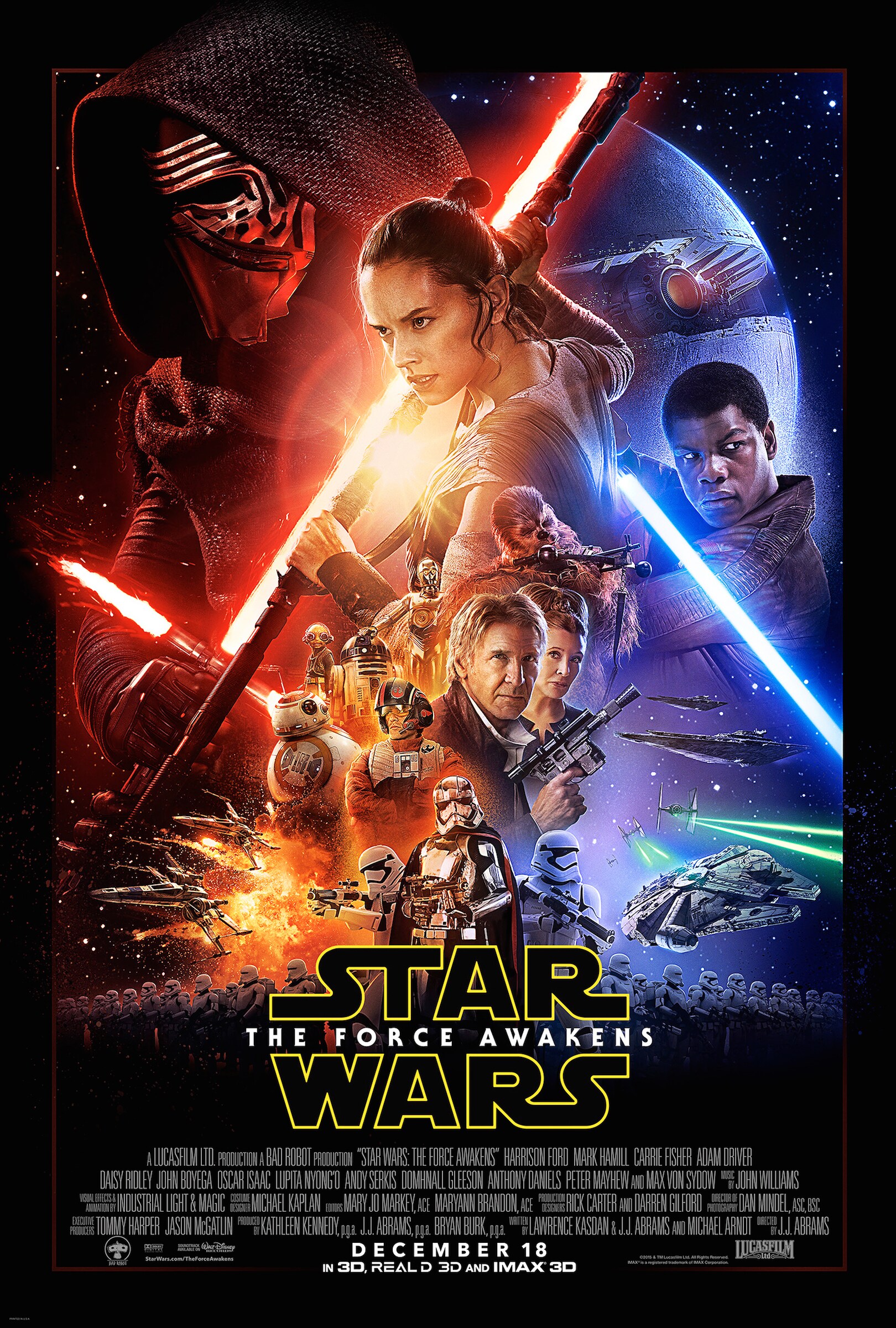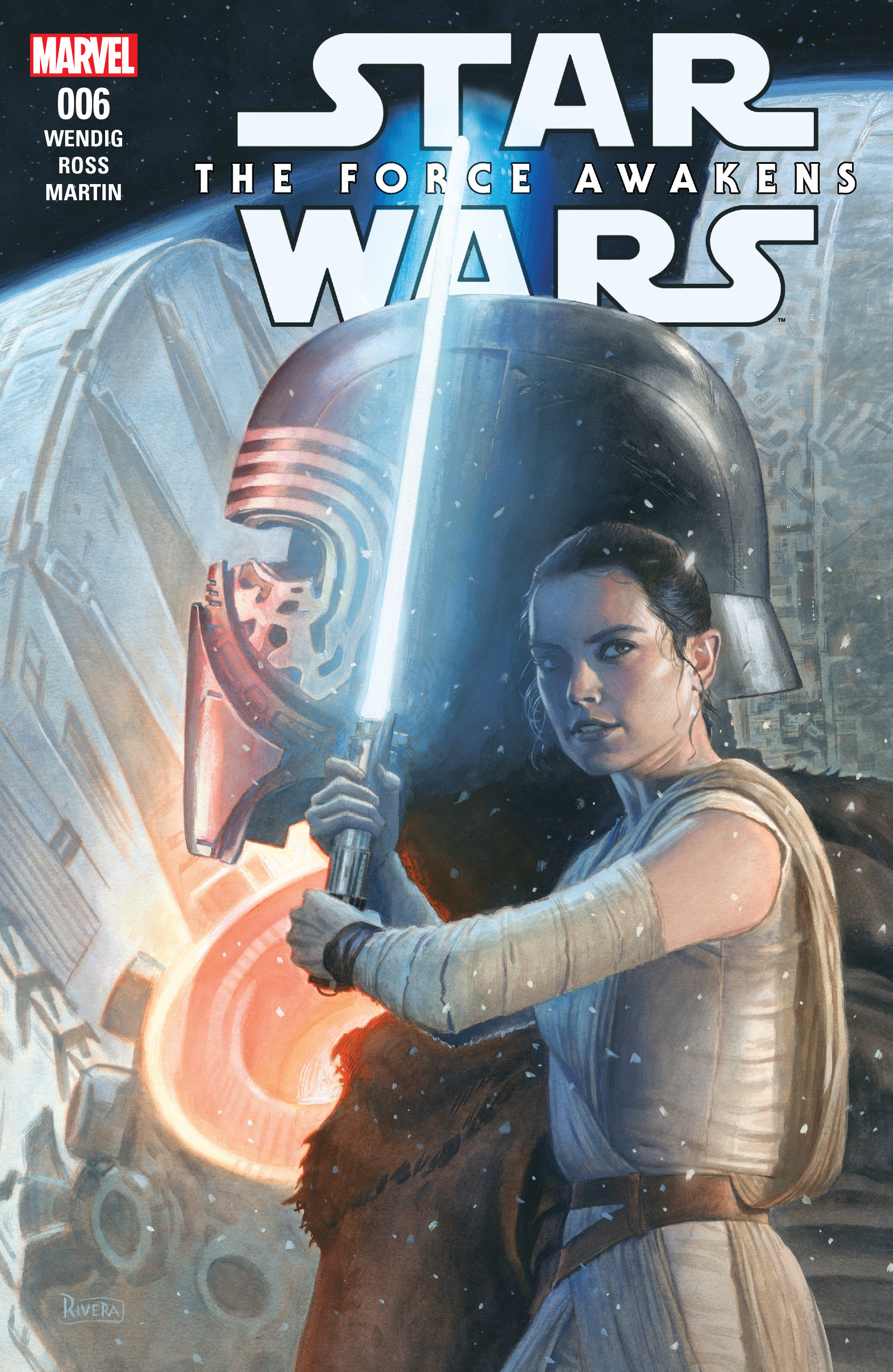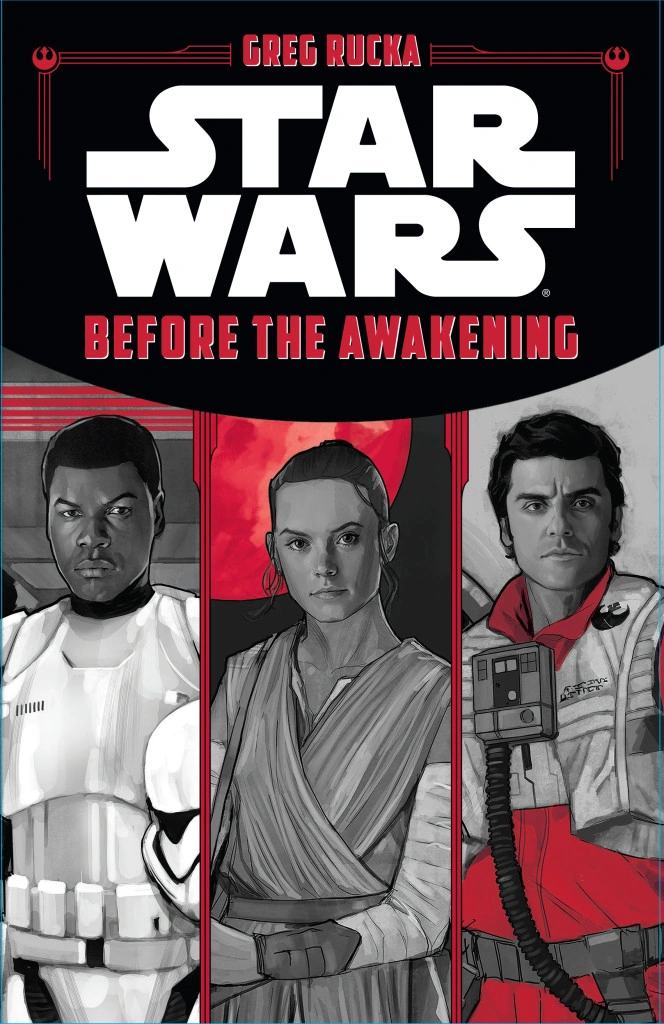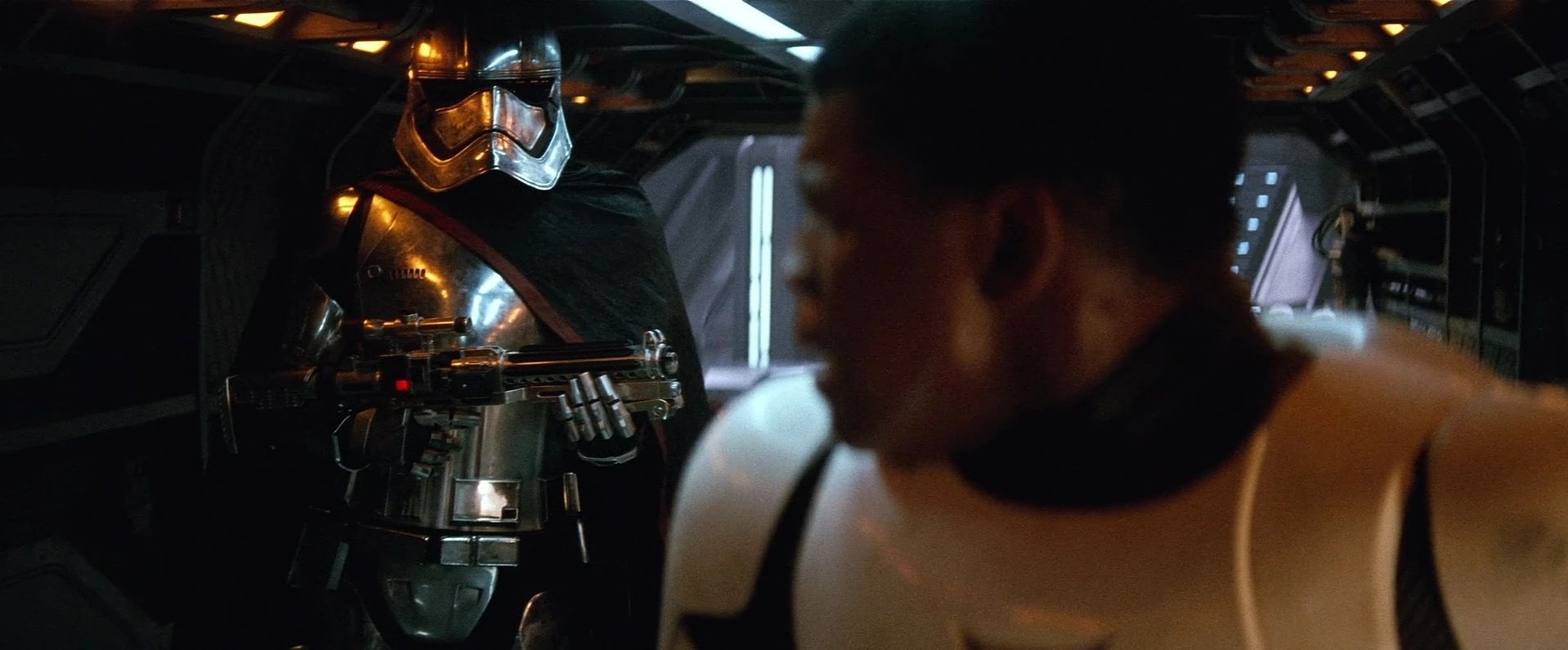I remember in 2012 hearing the announcement that Disney was purchasing Lucasfilm and all of its properties, including Star Wars. This included an announcement that they were going to produce new films. I was excited! The last Star Wars movie (not counting The Clone Wars) was more than seven years behind us. We were certain there would be no new films, and suddenly now there would be.
I remember making a point to avoid spoilers. I watched the trailers, but kept off social media in the weeks and months leading up to the movie's release. I bought books marketed as "Journey to The Force Awakens", but refused to read them until after I had seen the movie (in hindsight, none of those spoiled anything).
I missed opening night, as I was traveling for work that week. But I managed to get tickets to see it with my wife and her sister closer to Christmas.
For this post, I consumed the following stories:
The First Order attacks the Republic, taking away the Resistance's support and any real military threat to their expansion. Their new weapon can destroy an entire solar system with one shot.
The Resistance takes the fight to the First Order weapon. They rescue Rey, in whom Kylo Ren and the First Order's Supreme Leader, a mysterious being called Snoke, have shown a strange interest. They manage to destroy the weapon, but not before Kylo Ren murders his father, Han Solo.
The First Order's ability to threaten entire systems has been destroyed, but the government and fleet of the Republic are gone. The Resistance won, but they are without support. Equipped with a map to the first Jedi temple, Rey joins R2-D2 and Chewbacca to find Luke Skywalker.
The Force Awakens needed to establish a few things about the universe. Like Episodes IV and I, we knew nothing about the status quo of the Galaxy going in. As with those earlier movies, the opening crawl helps. There is an evil empire called the First Order. There is a Resistance fighting them. Luke Skywalker and Leia Organa are name-dropped. The movie then includes enough world-building to solidify what is going on 30 years after Return of the Jedi. The other stories, especially Before the Awakening, Phasma, and Poe Dameron, do a lot more to build up the world.
I enjoyed The Force Awakens, as well as the tie-in stories. I have heard the criticism that this movie retreads the first Star Wars movie too closely. While I agree that thematically it is very similar, I think it stands well enough on its own. The characters were interesting, the action compelling, and the world very well built.
The novelization provides additional scenes, all of which I am glad were cut out. I don't think any of them added any value, and some detracted from surprise moments that we got on screen. The only element that I would have preferred be kept (something that the Poe Dameron comic explored further) was C-3PO's network of droid spies.
I want to give a special mention to the Phasma novel. The character of Captain Phasma was wasted in these movies. She was presented as someone menacing. Her armor was different from the rest. She commanded authority, respect, and fear. But in the movie she was unceremoniously dropped in a trash compactor before being killed after one fight in The Last Jedi. She had potential to be a real threat to our heroes. But as with Darth Maul and Boba Fett before her, Phasma's time on screen is great, but ended before anything really amazing could be done. The novel telling her backstory, and the comic explaining what happened between Episodes VII and VIII (including how she killed numerous loyal First Order officers to hide her complicity in the events of the film) were thoroughly enjoyable stories. And again as with Maul and Fett, she shines in the expanded universe.
My next Canon post will be a lead-in to the TV show Rebels. I'll be breaking my own New Canon rule; even though it worked well this time, next time I won't experiencing the main content first before reading prelude books. I know for a fact that this will spoil some reveals in the show when I get to that later, but I am okay with that (some of it I've already been spoiled). I'll watch enough clips of the show to get character voices in my head right. But first, my next Legends post (Part 13) will be about the bounty hunters of the prequel era, including Aurra Sing, Jango Fett, and Zam Wesell.
Follow @C_Andrew_H
I remember making a point to avoid spoilers. I watched the trailers, but kept off social media in the weeks and months leading up to the movie's release. I bought books marketed as "Journey to The Force Awakens", but refused to read them until after I had seen the movie (in hindsight, none of those spoiled anything).
 |
| Movie poster for Star Wars Episode VII: The Force Awakens. Image from Wookieepedia. |
I missed opening night, as I was traveling for work that week. But I managed to get tickets to see it with my wife and her sister closer to Christmas.
For this post, I consumed the following stories:
- Episode VII: The Force Awakens (film directed by JJ Abrams, 2015)
- Episode VII: The Force Awakens novelization (novel by Alan Dean Foster, 2015)
- Episode VII: The Force Awakens 1-6 (comic mini-series by Chuck Wendig, 2016)
- Before the Awakening (young reader book by Greg Rucka, 2015)
- Star Wars: C-3PO (comic one-shot by James Robinson, 2016)
- Phasma (novel by Delilah S. Dawson, 2017)
- Captain Phasma 1-4 (comic mini-series by Kelly Thompson, 2017)
- Poe Dameron 1-31 + Annual 1-2 (comic series by Charles Soule, with some stories by Chris Eliopoulos, Robert Thompson, and Jody Houser, 2016-2018)
I watched the movie on blu-ray and read the novelization, Before the Awakening, and Phasma as hardcovers. I read the five trade paperback collected editions of the Poe Dameron comic, and the remaining comics were read digitally.
I acknowledge that the Phasma book and comic were marketed as tying into Episode VIII: The Last Jedi, and the end of Poe Dameron takes place during and after that movie. Nevertheless, most of those stories take place before and during The Force Awakens, so I read them here.
As mentioned above, I had seen The Force Awakens already. I had also read the C-3PO comic. The rest of these were new to me.
I'm going to try to summarize the stories more generally from now on.
Thirty years after the Emperor was killed in Episode VI, a new evil threatens the Galaxy. The First Order is expanding its influence. The New Republic secretly equips the Resistance, which fights the First Order.
Recently, Luke Skywalker, the last of the Jedi Knights, went into hiding. General Leia Organa, leader of the Resistance, is looking for clues to find her brother and in the process meets three new heroes: Poe Dameron, the cocky hot-shot pilot. Rey, the scavenger within him the Force has awoken. Finn, formerly FN-2187, the stormtrooper with a conscience. She also comes across villains, such as the First Order's stormtrooper corps, led by Captain Phasma, and her own son and Luke's former apprentice, Ben Solo, now called Kylo Ren.
I acknowledge that the Phasma book and comic were marketed as tying into Episode VIII: The Last Jedi, and the end of Poe Dameron takes place during and after that movie. Nevertheless, most of those stories take place before and during The Force Awakens, so I read them here.
As mentioned above, I had seen The Force Awakens already. I had also read the C-3PO comic. The rest of these were new to me.
 |
| Cover of Episode VII: The Force Awakens #6. Image from Wookieepedia. |
I'm going to try to summarize the stories more generally from now on.
Story
Thirty years after the Emperor was killed in Episode VI, a new evil threatens the Galaxy. The First Order is expanding its influence. The New Republic secretly equips the Resistance, which fights the First Order.
Recently, Luke Skywalker, the last of the Jedi Knights, went into hiding. General Leia Organa, leader of the Resistance, is looking for clues to find her brother and in the process meets three new heroes: Poe Dameron, the cocky hot-shot pilot. Rey, the scavenger within him the Force has awoken. Finn, formerly FN-2187, the stormtrooper with a conscience. She also comes across villains, such as the First Order's stormtrooper corps, led by Captain Phasma, and her own son and Luke's former apprentice, Ben Solo, now called Kylo Ren.
 |
| Our new heroes, Finn, Rey, and Poe, on the cover of Before the Awakening. Image from Wookieepedia. |
The First Order attacks the Republic, taking away the Resistance's support and any real military threat to their expansion. Their new weapon can destroy an entire solar system with one shot.
The Resistance takes the fight to the First Order weapon. They rescue Rey, in whom Kylo Ren and the First Order's Supreme Leader, a mysterious being called Snoke, have shown a strange interest. They manage to destroy the weapon, but not before Kylo Ren murders his father, Han Solo.
The First Order's ability to threaten entire systems has been destroyed, but the government and fleet of the Republic are gone. The Resistance won, but they are without support. Equipped with a map to the first Jedi temple, Rey joins R2-D2 and Chewbacca to find Luke Skywalker.
Thoughts
The Force Awakens needed to establish a few things about the universe. Like Episodes IV and I, we knew nothing about the status quo of the Galaxy going in. As with those earlier movies, the opening crawl helps. There is an evil empire called the First Order. There is a Resistance fighting them. Luke Skywalker and Leia Organa are name-dropped. The movie then includes enough world-building to solidify what is going on 30 years after Return of the Jedi. The other stories, especially Before the Awakening, Phasma, and Poe Dameron, do a lot more to build up the world.
I enjoyed The Force Awakens, as well as the tie-in stories. I have heard the criticism that this movie retreads the first Star Wars movie too closely. While I agree that thematically it is very similar, I think it stands well enough on its own. The characters were interesting, the action compelling, and the world very well built.
The novelization provides additional scenes, all of which I am glad were cut out. I don't think any of them added any value, and some detracted from surprise moments that we got on screen. The only element that I would have preferred be kept (something that the Poe Dameron comic explored further) was C-3PO's network of droid spies.
I want to give a special mention to the Phasma novel. The character of Captain Phasma was wasted in these movies. She was presented as someone menacing. Her armor was different from the rest. She commanded authority, respect, and fear. But in the movie she was unceremoniously dropped in a trash compactor before being killed after one fight in The Last Jedi. She had potential to be a real threat to our heroes. But as with Darth Maul and Boba Fett before her, Phasma's time on screen is great, but ended before anything really amazing could be done. The novel telling her backstory, and the comic explaining what happened between Episodes VII and VIII (including how she killed numerous loyal First Order officers to hide her complicity in the events of the film) were thoroughly enjoyable stories. And again as with Maul and Fett, she shines in the expanded universe.
My next Canon post will be a lead-in to the TV show Rebels. I'll be breaking my own New Canon rule; even though it worked well this time, next time I won't experiencing the main content first before reading prelude books. I know for a fact that this will spoil some reveals in the show when I get to that later, but I am okay with that (some of it I've already been spoiled). I'll watch enough clips of the show to get character voices in my head right. But first, my next Legends post (Part 13) will be about the bounty hunters of the prequel era, including Aurra Sing, Jango Fett, and Zam Wesell.
Follow @C_Andrew_H

Comments
Post a Comment